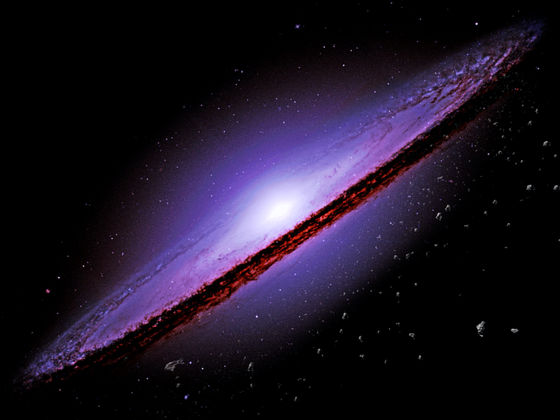Alien Dyson spheres could be hot, dusty galaxies called 'hot dogs'

In May 2024, a paper was
[2405.14921] Background Contamination of the Project Hephaistos Dyson Spheres Candidates
https://arxiv.org/abs/2405.14921
Are dusty quasars masquerading as Dyson sphere candidates? – Physics World
https://physicsworld.com/a/are-dusty-quasars-masquerading-as-dyson-sphere-candidates/
7 potential 'alien megastructures' spotted in our galaxy are not what they seem | Live Science
https://www.livescience.com/space/extraterrestrial-life/7-potential-alien-megastructures-spotted-in-our-galaxy-are-not-what-they-seem
The Dyson sphere is a hypothetical artificial structure proposed by physicist Freeman Dyson in 1960, which would cover a star with a structure and directly harness its energy. However, no matter how technologically advanced an alien is, it would be difficult to use 100% of the enormous amount of energy emitted by a star, so it is thought that the Dyson sphere would emit a large amount of waste heat to the outside.
Project Hephaestus, a SETI (Search for Extraterrestrial Intelligence) project to search for Dyson spheres built by extraterrestrial civilizations, announced that after analyzing data from various space observation projects using the excess infrared light emitted by Dyson spheres as a clue, it has found seven candidates for Dyson spheres in the Milky Way galaxy.
Research results show that there are seven candidates for 'Dyson spheres' in the galaxy, where alien megastructures envelop stars - GIGAZINE

Later, another research team published a paper verifying the results of Project Hephaestus on the preprint server arXiv.
In a new study published by the research team, they found that three of the seven candidates are likely 'hot dog' galaxies covered in dust.
Hot Dog is covered in a huge, thick cloud of dust, and the surrounding material, heated by the quasar at its center, emits a lot of infrared radiation.
The research team compared the positions of the Dyson sphere candidates announced by Project Hephaestus with multiple observational data from the All Sky Survey , and found that there were slight discrepancies in their positions, suggesting that at least three of the Dyson sphere candidates could have been mistaken for hot dogs behind them.
As for the remaining Dyson sphere candidates, it was unclear whether the data was contaminated with hot dogs, but the team claims the same is true for the other four.

However, the team does not rule out the possibility that the potential Dyson sphere is real, and co-author Michael Garrett of the University of Manchester's Jodrell Bank Centre for Astrophysics said: 'It would be worth pursuing this with new observations across the electromagnetic spectrum to determine which interpretation is correct.'
The original research team that announced the Dyson sphere candidate also agreed that further investigation is worthwhile. 'The data from the James Webb Space Telescope are ideal for checking whether the data is being contaminated by hot debris covering the star or background galaxies,' said Matthias Suazo of Uppsala University, a member of Project Hephaestus. He looked forward to future observations with the most advanced space telescopes at the time of writing.
Related Posts:
in Free Member, Science, Posted by log1l_ks






